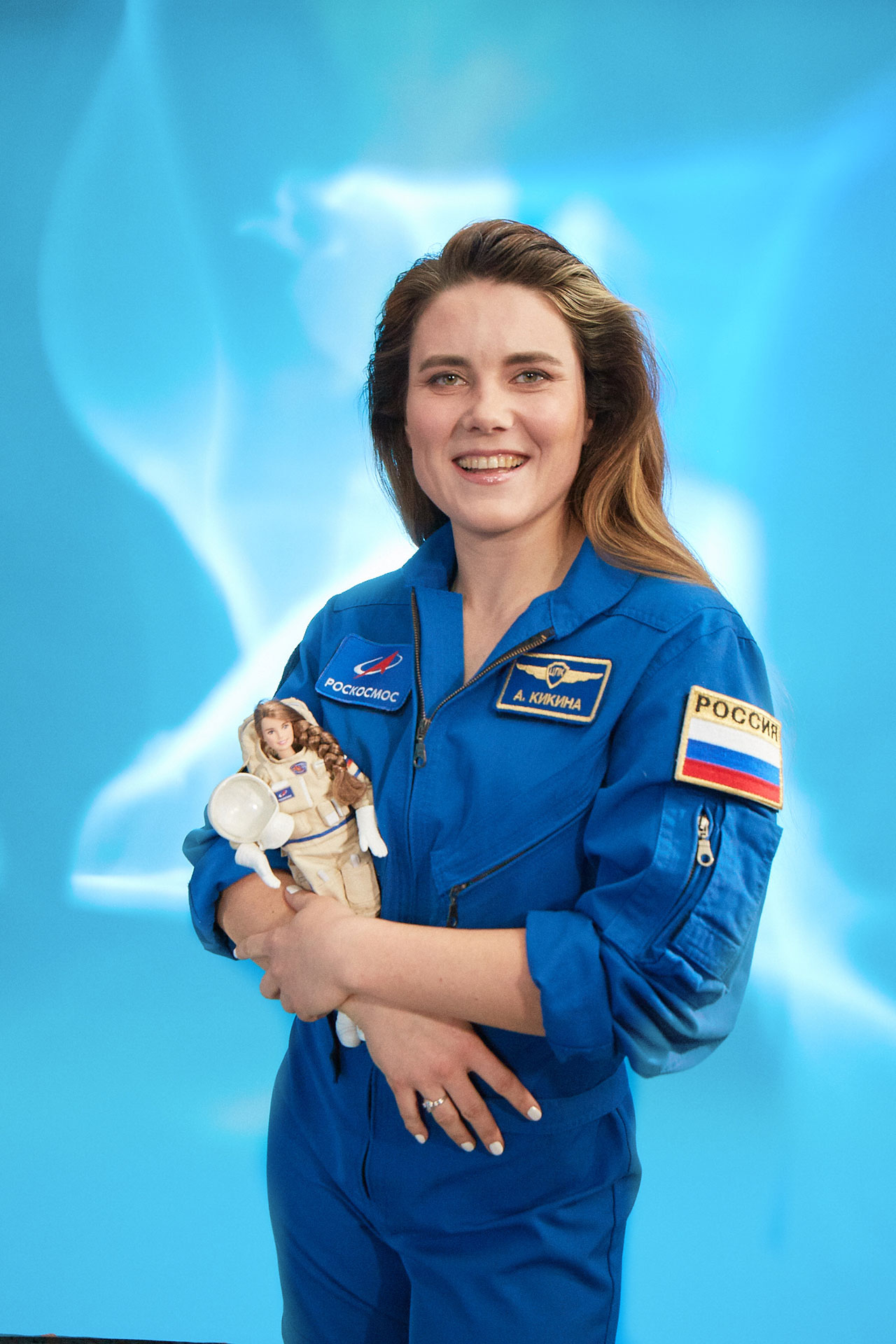Russia's only woman cosmonaut, Anna Kikina, inspires one-of-a-kind Barbie doll

The only woman who is currently active in Russia's cosmonaut corps now has her own one-of-a-kind Barbie doll.
Anna Kikina, who became a cosmonaut in 2012, is among the latest role models chosen for Mattel's "You Can Be Whoever You Want" campaign, which is aimed at inspiring young girls to pursue the profession of their choosing.
"The most popular doll in the world continues to inspire girls to chase their wildest dreams and clearly shows that each of them can become whoever they want! Barbie presents a doll that embodies the image of Anna Kikina, the only woman in Roscosmos' cosmonaut corps," Russia's state space corporation announced on Tuesday (March 16).
Pioneering women in space: a gallery of astronaut firsts
The Anna Kikina Barbie has two models: one wearing a blue flight suit patterned after the cosmonaut's coveralls worn during training, and the other garbed in a doll-sized version of Russia's Orlan-MKS extravehicular activity (EVA) spacesuit. Both outfits are adorned by miniature versions of the same cosmonaut corps and Roscosmos patches as worn by Kikina.
Kikina reacted to the doll's debut by sharing memories of her own childhood.
"As a child, I did not dream of becoming an astronaut, but if I had a Barbie cosmonaut doll, then the idea of being [one] would probably have come to mind," Kikina said in a statement released by Roscosmos. "The Barbie cosmonaut, in her own way, does not only represent the profession to children, but also makes it clear that everyone who sees it and sets their intentions accordingly has a chance to become a cosmonaut."
Breaking space news, the latest updates on rocket launches, skywatching events and more!
"It is not that every girl playing with such a Barbie will want to be a cosmonaut. The most important thing is that they know they have the choice — they have the right to choose any profession that they like," she said.
A 36-year-old engineer who graduated with honors from the Novosibirsk State Academy of Water Transportation Engineering (today the Siberian State University of Water Transport), Kikina is only the fourth Russian woman to be selected to fly into space. She is slated to launch on her first mission, a flight to the International Space Station, in 2022.
"Today Anna is a role model for many," Roscosmos said. "She is both strong and feminine, bold and gentle, wise and with an excellent sense of humor — a bright personality in which professionalism and warmth are harmoniously combined."
Like other Barbie dolls in Mattel's "You Can Be Whoever You Want" campaign and similar outreach programs around the world, the Kikina doll is not being made for sale to the public. Instead, the cosmonaut doll will be given away in celebration of the 60 years since the launch of Yuri Gagarin, the first cosmonaut, in April 1961.
"It will not go on sale," Roscosmos cosmonaut Oleg Artemyev wrote on the Telegram messaging platform. "It can be won in a competition in honor of the 60th anniversary of the first crewed flight into space."
No further details about the contest were given.
The Anna Kikina doll brings Barbie's role as a space explorer full circle. The first Barbie astronaut outfit, the 1965 "Barbie Miss Astronaut," was said to be inspired by cosmonaut Valentina Tereshkova becoming the world's first woman to fly into space two years earlier.
In the decades since, Barbie dolls have been released with a hot pink spacesuit ("Astronaut Barbie" in 1985), in celebration of the first moon landing ("Astronaut Barbie Career Collection Special Edition" in 1994), as a Space Camp trainee ("Space Camp Barbie" in 1998 and 2008) and as the first woman on Mars ("Mars Explorer Barbie" in 2013). Most recently, Barbie was dressed in a Russian Sokol spacesuit-inspired outfit for a line celebrating the past six decades of career dolls ("60th Anniversary Astronaut" in 2019) and the current collection of Barbie "Space Discovery" dolls.
Similar to the Anna Kikina doll, Mattel also collaborated with the European Space Agency (ESA) to make two one-of-a-kind Barbie dolls modeled after Italian astronaut Samantha Cristoforetti in 2017. Two years later, Mattel produced for sale a doll in its Barbie Inspiring Women Series honoring Sally Ride, the first American woman to launch into space.
Follow collectSPACE.com on Facebook and on Twitter at @collectSPACE. Copyright 2021 collectSPACE.com. All rights reserved.

Robert Pearlman is a space historian, journalist and the founder and editor of collectSPACE.com, a daily news publication and community devoted to space history with a particular focus on how and where space exploration intersects with pop culture. Pearlman is also a contributing writer for Space.com and co-author of "Space Stations: The Art, Science, and Reality of Working in Space” published by Smithsonian Books in 2018.
In 2009, he was inducted into the U.S. Space Camp Hall of Fame in Huntsville, Alabama. In 2021, he was honored by the American Astronautical Society with the Ordway Award for Sustained Excellence in Spaceflight History. In 2023, the National Space Club Florida Committee recognized Pearlman with the Kolcum News and Communications Award for excellence in telling the space story along the Space Coast and throughout the world.



